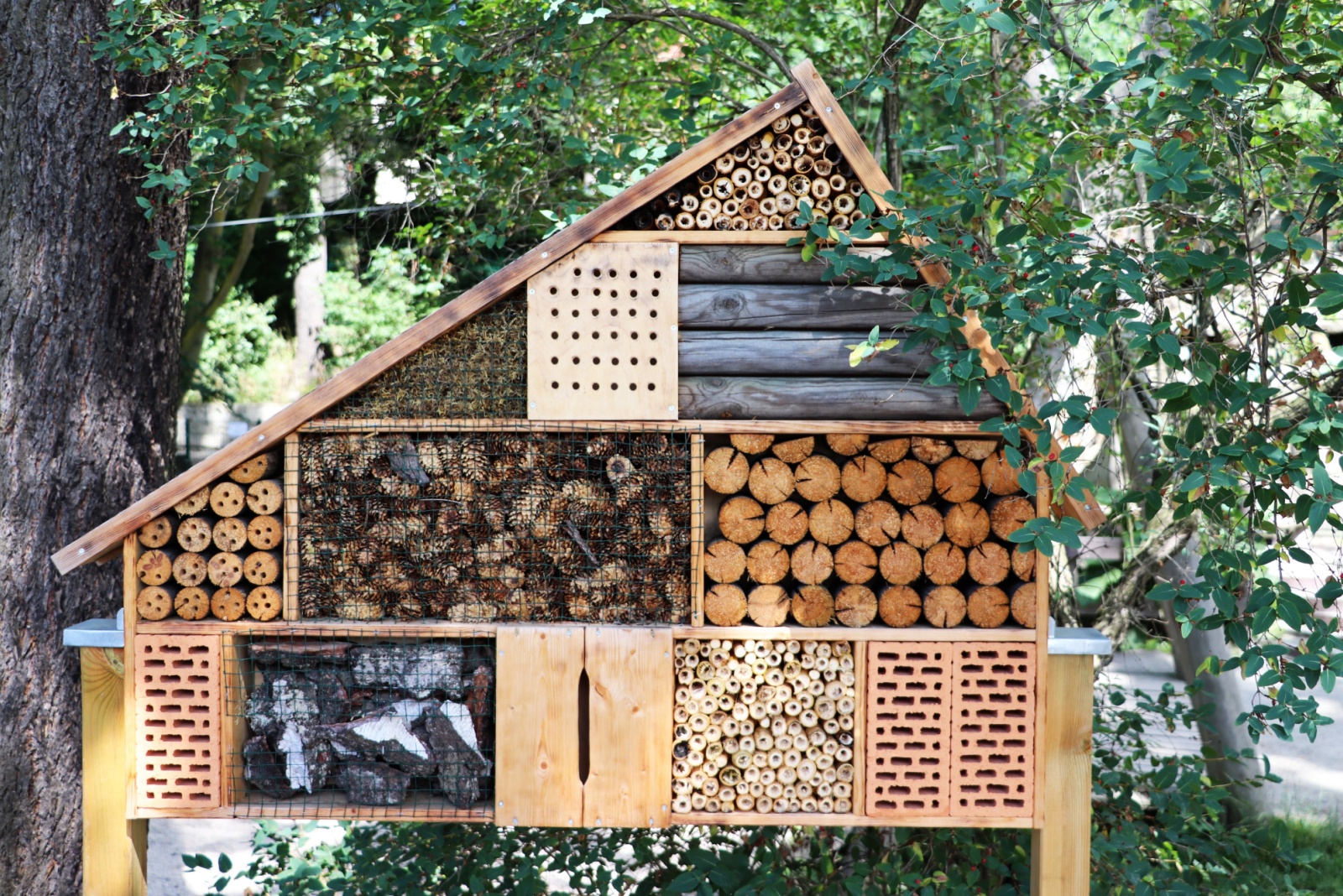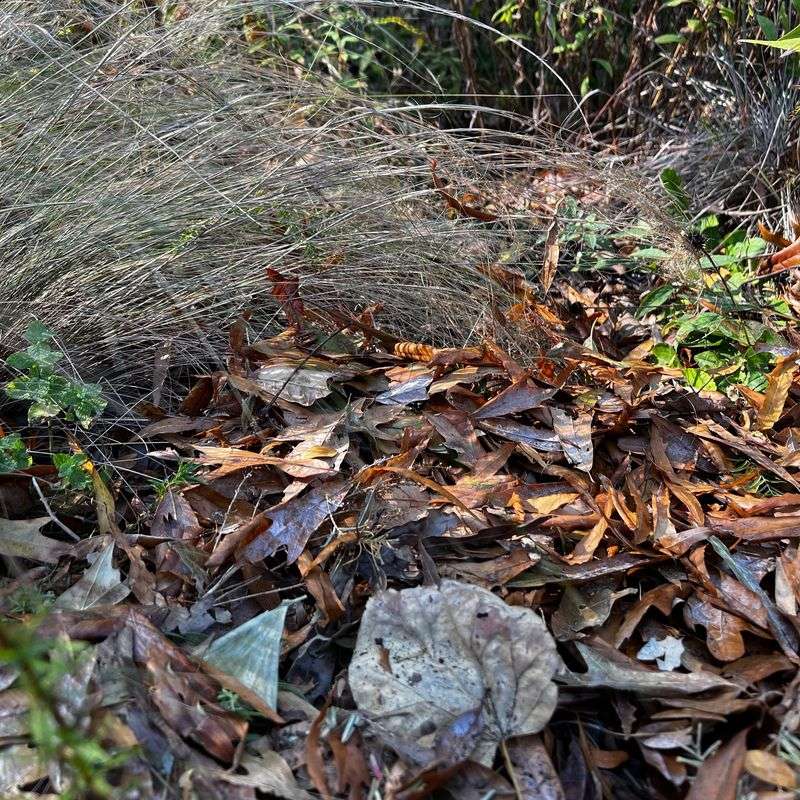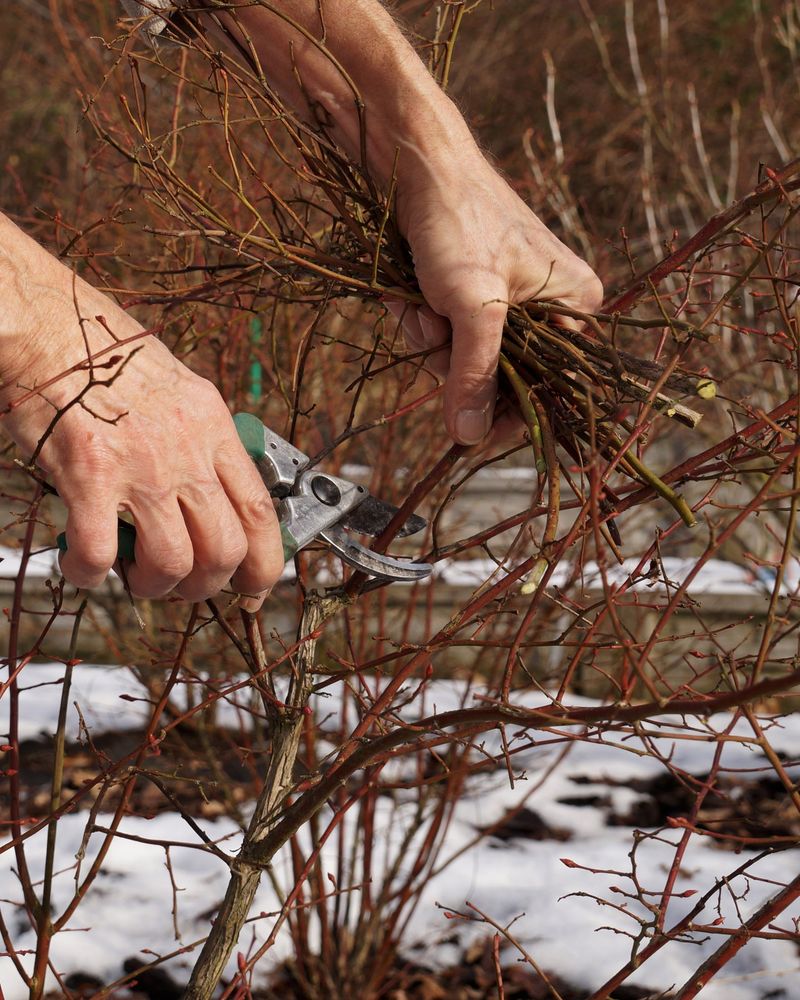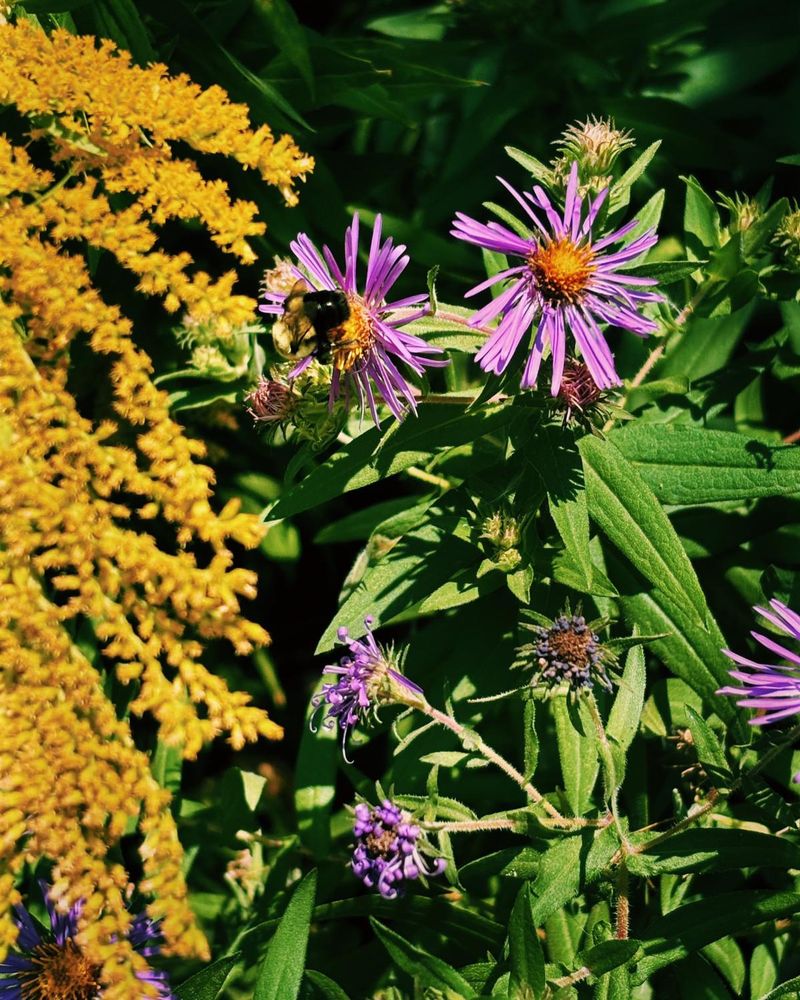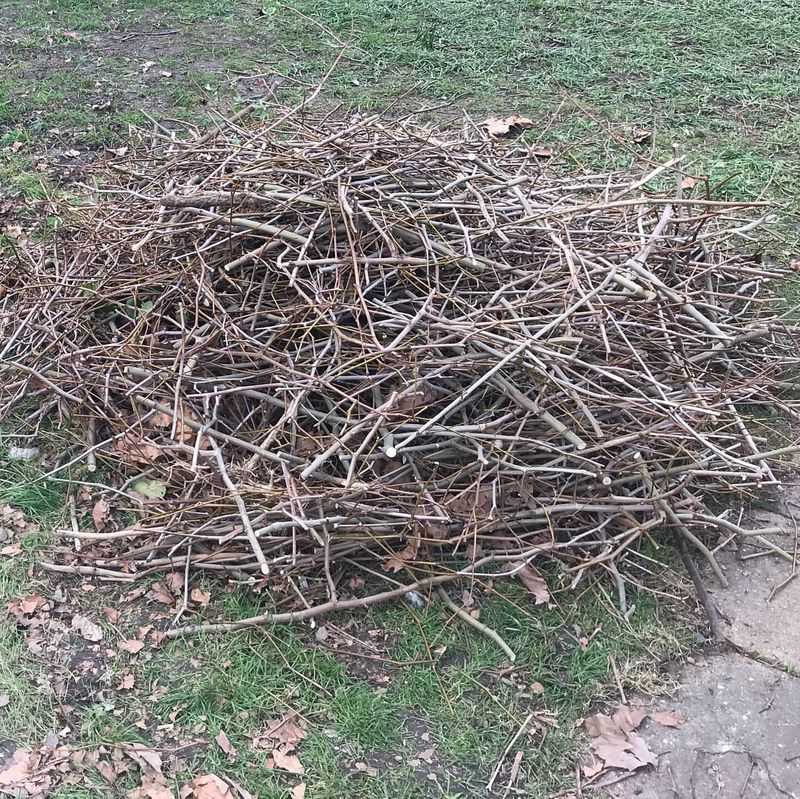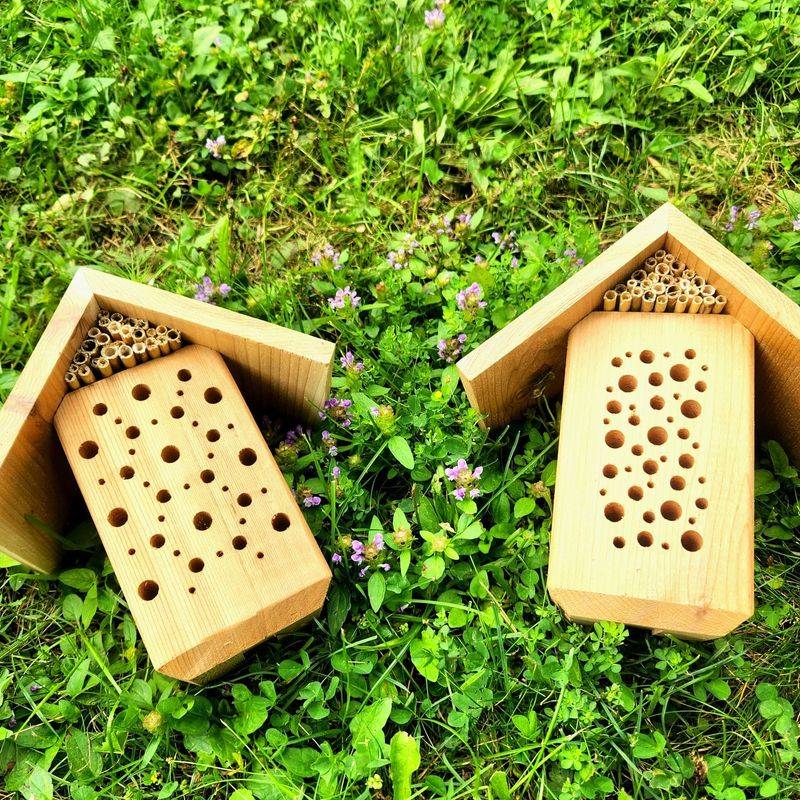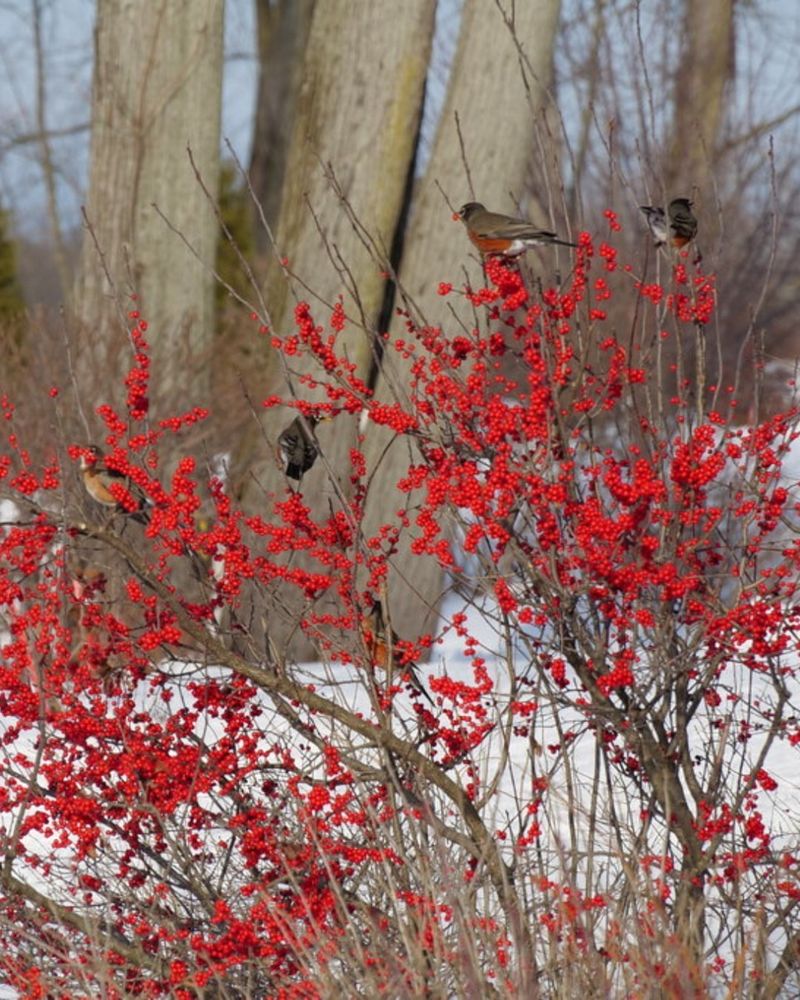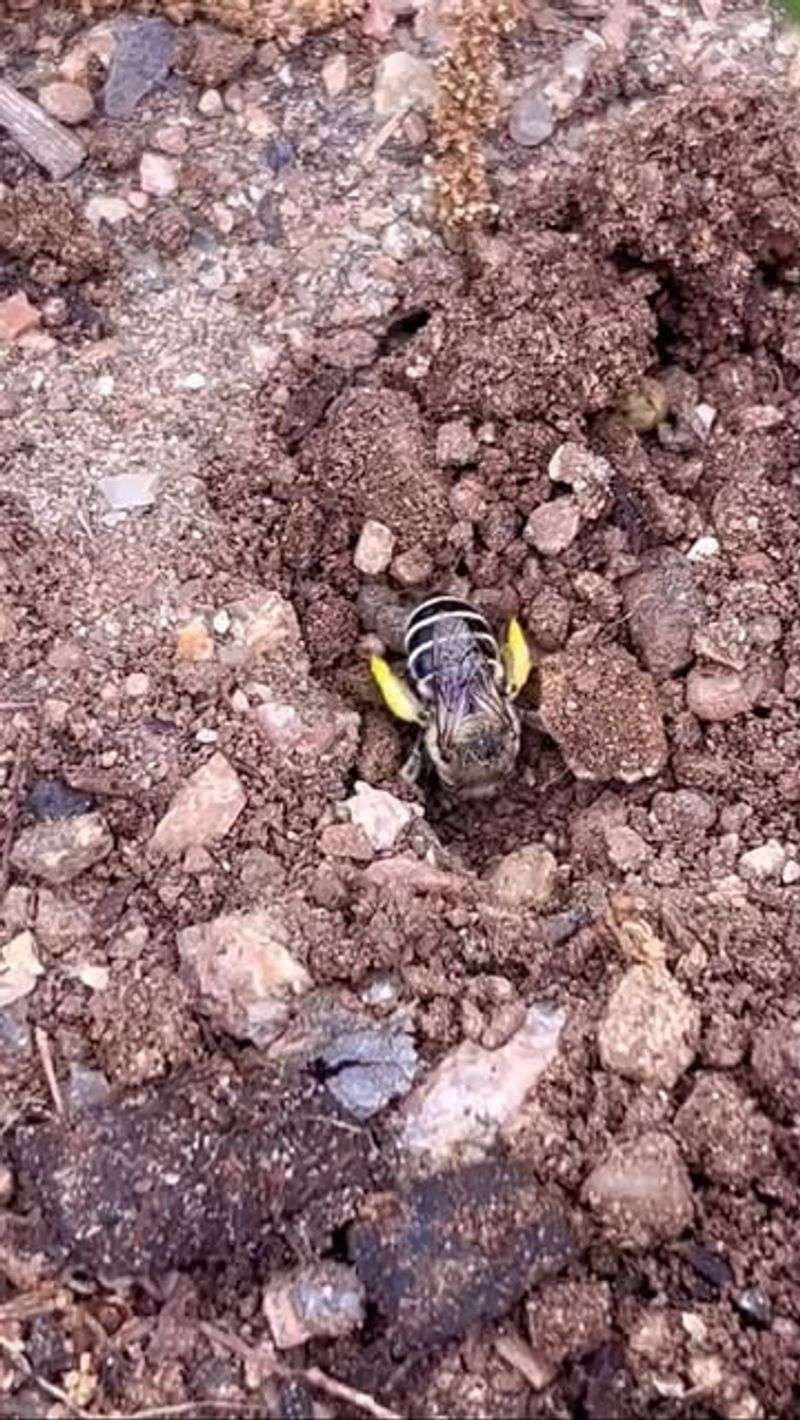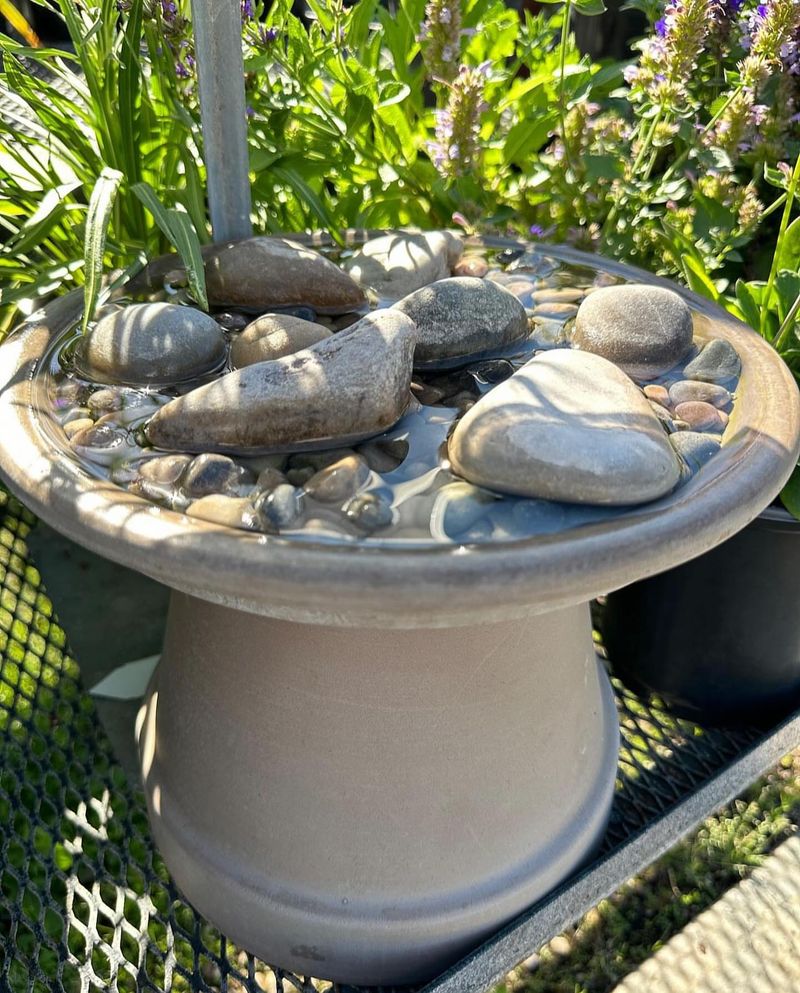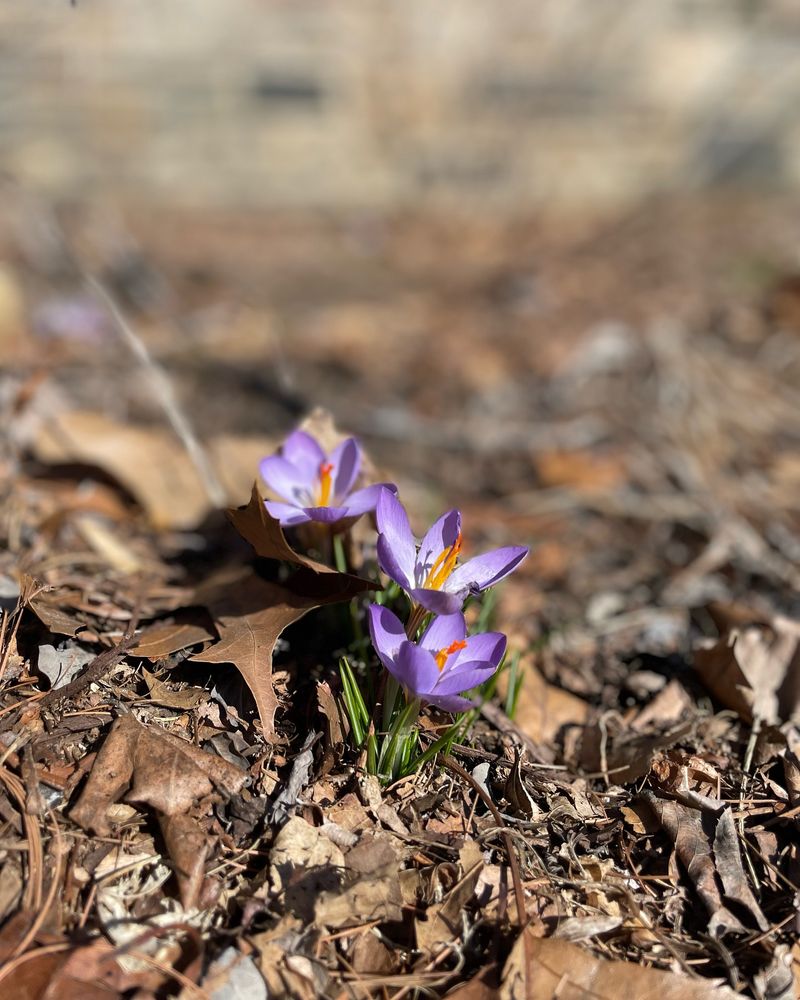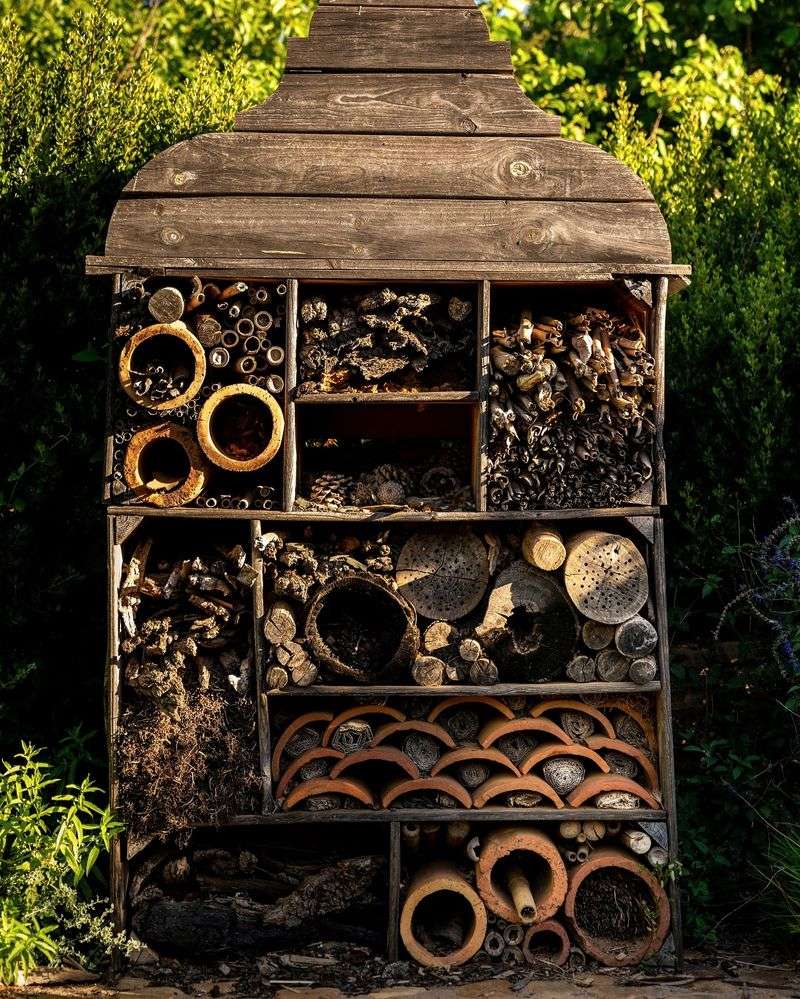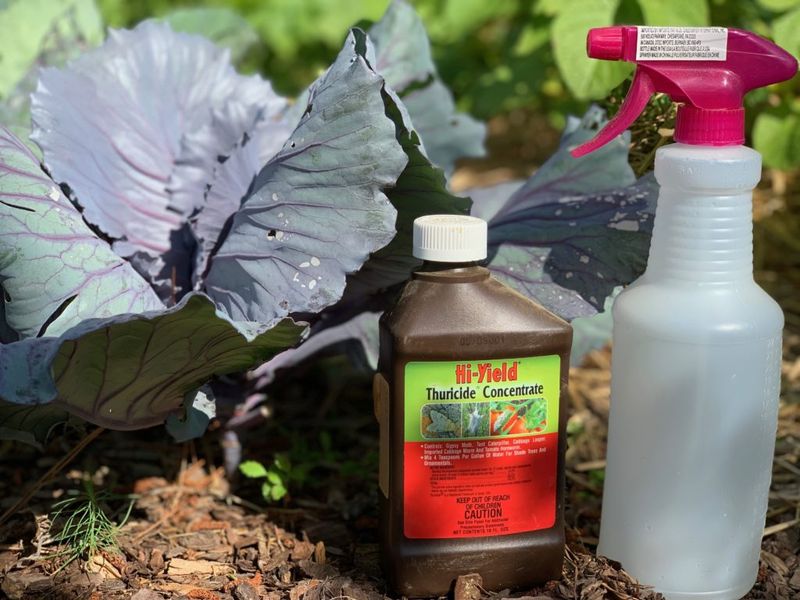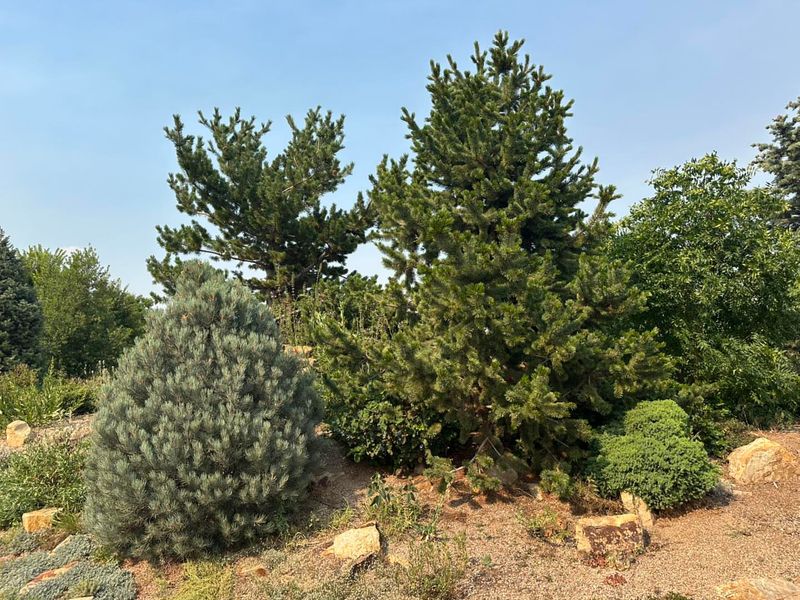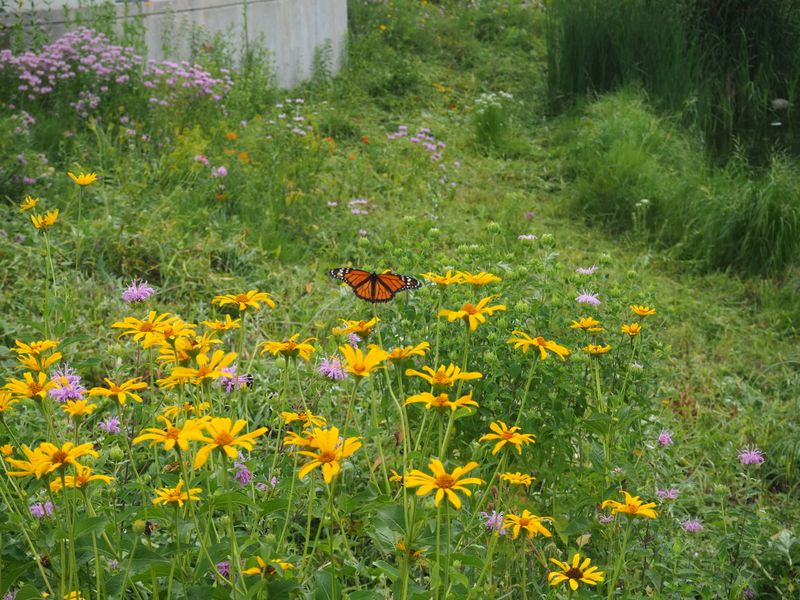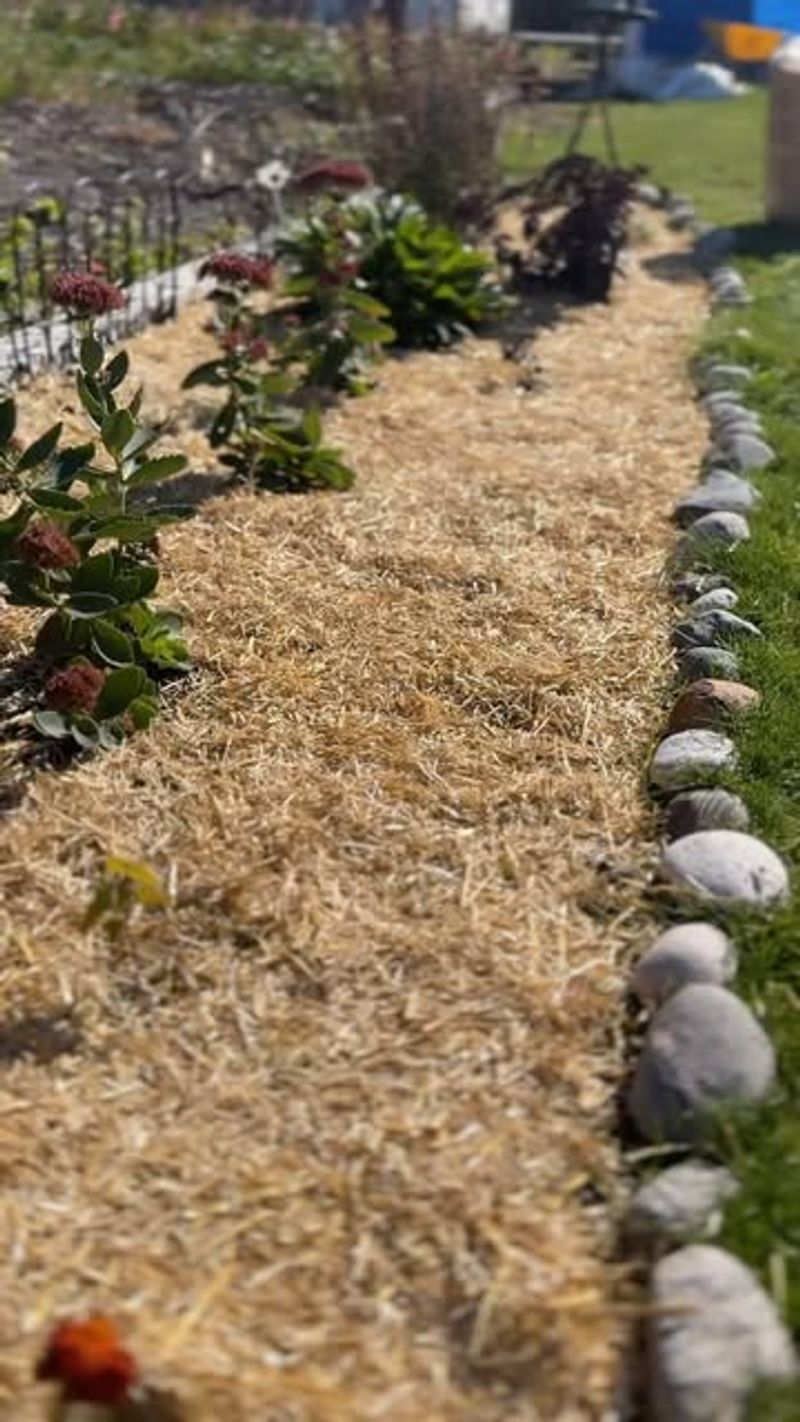Montana winters bring unique challenges for our local pollinators, from bees to butterflies. As temperatures drop and snow blankets the landscape, these tiny creatures struggle to find food and shelter in our northern climate.
Many gardeners pack up their tools in fall, not realizing how small changes in their winter garden routine could create pollinator havens. Even in the coldest months, our yards can become lifelines for these essential creatures.
I noticed last February how a few native plants I’d left standing became bustling hubs of early spring activity. With minimal effort, we can transform our Montana gardens into winter pollinator sanctuaries that bridge the gap between fall’s abundance and spring’s renewal.
1. Leave Fallen Leaves In Garden Beds
Those crispy autumn leaves create perfect winter homes for butterfly pupae and beneficial insects. Rather than bagging them up, rake leaves into your garden beds where they’ll decompose slowly.
Many native Montana butterflies, including mourning cloaks, overwinter in leaf litter. The natural mulch also protects your soil from harsh temperature swings common in our mountain state.
Come spring, you’ll notice improved soil texture and moisture retention where leaves were left to decompose naturally.
2. Delay Garden Cleanup Until Spring
Hollow plant stems house hibernating native bees through Montana’s freezing months. When you leave dead plants standing until temperatures consistently reach 50°F, you’re providing crucial shelter.
Wait until you see consistent activity from mason bees and other early pollinators before cutting back last year’s growth. This timing usually aligns with mid-April in most Montana regions.
The seed heads of coneflowers, black-eyed Susans, and native grasses also provide food for birds that help pollinate early spring blooms.
3. Plant Native Late-Blooming Flowers
Goldenrod, asters, and blazing star extend the nectar season well into Montana’s fall. These hardy natives evolved to withstand our climate while providing crucial late-season food for bees preparing for winter.
Planting in clusters creates more visible and accessible feeding stations. Even after blooming ends, the seeds continue feeding birds through winter months.
Montana native asters like smooth blue aster can bloom into October, offering vital resources when most garden plants have finished their seasonal show.
4. Create Brush Piles In Quiet Corners
Gathering fallen branches and twigs into loose piles creates multi-functional pollinator housing. These natural structures provide protection from Montana’s harsh winter winds and subzero temperatures.
Bumble bee queens often seek out these protected spaces to hibernate through winter. Position brush piles in undisturbed areas away from high traffic but still receiving some winter sunlight.
Adding larger logs at the bottom creates valuable gaps and tunnels that serve as natural shelters for various beneficial insects through the coldest months.
5. Install Bee Houses In Protected Locations
Mason bee houses provide essential shelter when natural options are scarce. Mount these structures on east-facing walls or fences where they’ll catch morning sun but avoid harsh afternoon exposure.
The ideal placement is 3-6 feet above ground, protected from Montana’s fierce winter winds. Look for houses with removable tubes that can be cleaned annually to prevent parasite buildup.
Nearby mud sources are crucial for mason bees to seal their egg chambers, so consider maintaining a small patch of exposed soil that stays slightly damp.
6. Grow Native Shrubs With Winter Berries
Serviceberry, chokecherry, and snowberry provide valuable food for birds that help pollinate spring blooms. These Montana natives produce berries that persist through winter months when other food sources disappear.
Birds feeding on these berries distribute seeds across your landscape, expanding habitat naturally. The dense branching also creates protected microhabitats where insects can shelter from harsh weather.
Planting these shrubs near windbreaks maximizes their survival potential through Montana’s challenging winter conditions while creating pollinator-friendly zones.
7. Maintain Bare Soil Patches For Ground-Nesting Bees
Most native bees actually nest in the ground, not in hives. Creating small patches of uncovered, undisturbed soil gives these essential pollinators places to dig their tunnels and establish colonies.
Choose sunny, well-drained spots away from heavy foot traffic. A south-facing slope works perfectly in Montana’s climate, as it warms more quickly in spring.
Avoid mulching or disturbing these designated areas, especially during winter when nesting bees are dormant beneath the soil surface.
8. Provide Water Sources That Won’t Freeze Solid
Even in winter, pollinators need water on warm days. A dark-colored, shallow dish with pebbles creates safe drinking spots without drowning risks. The dark material absorbs heat, keeping water accessible longer during Montana’s brief winter warm spells.
Position these water sources in sheltered, sunny locations where they’ll thaw first. Adding a pinch of sea salt provides trace minerals beneficial to early-emerging pollinators.
Check and refresh these water sources regularly, especially after chinook winds create unexpected warm periods in our mountain state.
9. Plant Early Spring Bloomers For First Foragers
Fall is perfect for planting bulbs like crocus and Siberian squill that provide crucial first nectar in early spring. These flowers often bloom while snow still covers parts of your Montana garden, offering vital resources to queen bumble bees emerging from hibernation.
Planting near south-facing walls creates microclimate pockets where snow melts first. These protected zones become pollinator hotspots during late winter thaws.
Native pasqueflowers are especially valuable early bloomers adapted to Montana’s challenging spring conditions, often flowering while patches of snow still linger nearby.
10. Build An Insect Hotel With Natural Materials
Creating multi-chambered shelters with pinecones, hollow stems, and drilled wood blocks provides diverse nesting options. Different hole sizes accommodate various pollinator species that call Montana home.
Position your insect hotel facing southeast to catch morning sun but avoid afternoon overheating. Adding a small roof protects inhabitants from our heavy mountain snowfall.
Incorporating local materials like ponderosa pine bark and hollow stems from native plants creates familiar textures that naturally attract local pollinator species.
11. Avoid Winter Pesticide Applications
Dormant oil sprays and winter pesticides can harm overwintering beneficial insects. Many pollinators hibernate in bark crevices or soil near the base of the very trees targeted for winter treatment.
Instead, use physical barriers like burlap tree wraps to protect against winter pests. These provide added insulation without introducing chemicals into the environment.
If treatment is absolutely necessary, choose the mildest option and apply it on cold days when pollinators are deeply dormant, minimizing direct contact with beneficial insects.
12. Create Windbreaks With Native Conifers
Montana’s winter winds can devastate pollinator habitats. Planting rows of native evergreens like Rocky Mountain juniper creates crucial shelter zones where temperatures remain more stable.
These protected pockets become microclimates where spring arrives earlier, extending the effective growing season. The dense branches also provide winter roosting sites for birds that help control garden pests.
Conifers planted on the north and west sides of gardens block the harshest winter winds while allowing beneficial southern sun exposure during cold months.
13. Establish A Dedicated Pollinator Meadow
Converting even a small section of lawn into native wildflowers creates year-round pollinator support. Montana natives like blanketflower and prairie smoke have evolved to provide food and habitat through our challenging seasons.
Leave this area completely undisturbed through winter, allowing natural seed dispersal and stem habitat. The standing dead plants catch snow, creating insulating layers that protect soil-dwelling insects.
Mark the area clearly so family members don’t accidentally “clean up” this intentional habitat during winter yard maintenance.
14. Mulch Perennials With Straw Instead Of Plastic
Natural straw mulch creates protective insulation while allowing beneficial insects access to soil. Unlike plastic barriers, straw breaks down gradually, improving soil structure while providing nesting material for native bees.
Apply a 3-4 inch layer around perennial plants after the ground freezes but before heavy snow accumulates. This timing is crucial in Montana’s variable fall conditions.
Wheat straw works best as it’s less likely to contain weed seeds than hay, preventing unwanted competition for your pollinator plants come spring.
15. Install A Butterfly Hibernation Box
Specialized boxes with narrow vertical slots provide perfect winter quarters for mourning cloaks and other Montana butterfly species that overwinter as adults. The design protects them from predators while maintaining appropriate humidity levels.
Mount these boxes 4-6 feet high on trees at the woodland edge of your property. Partial shade prevents overheating during winter warm spells that might trigger premature emergence.
Adding bark strips inside creates textured surfaces where butterflies can securely attach during their dormant phase through Montana’s long winter.

